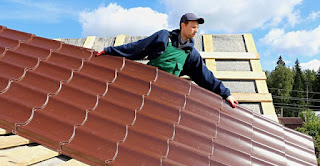Common HVAC Problems and How to Identify Them: A Guide to HVAC Repair Services
Introduction
Maintaining a comfortable and well-regulated indoor environment is crucial for any home or office. HVAC (heating, ventilation, and air conditioning) systems play a vital role in achieving this, but like any other complex machinery, they are susceptible to problems. In this article, we will discuss some common HVAC issues and provide guidance on how to identify them. When facing these challenges, it's essential to seek professional HVAC repair services, such as local HVAC services, to ensure a prompt and efficient resolution.
Insufficient Heating or Cooling
When your HVAC system fails to provide adequate heating or cooling, it's a clear sign of a problem. This issue can be caused by various factors, including:
Clogged Air Filters:
Dirty or clogged air filters restrict airflow, reducing the system's efficiency. Regularly inspect and replace air filters to prevent this problem.
Thermostat Issues:
A malfunctioning thermostat may not accurately communicate the desired temperature to the HVAC system. Check if the temperature settings are correct, and consider replacing the thermostat if necessary.
Refrigerant Leaks:
Low refrigerant levels can hinder cooling. Look for signs of leakage, such as oil stains or hissing sounds near the refrigerant lines, and consult HVAC repair services to fix the issue.
Strange Noises
Unusual sounds emanating from your HVAC system can indicate underlying problems. Here are a few possible causes:
Loose or damaged fan blades:
Loose or damaged fan blades can create a scraping or rattling noise. Turn off the system and contact HVAC repair services to avoid further damage.
Belt Issues:
Worn-out or misaligned belts can produce squealing or screeching sounds. Regular maintenance and timely belt replacements can prevent this problem.
Motor Problems:
A faulty motor may generate grinding or humming sounds. Professional HVAC technicians can diagnose and repair motor-related issues efficiently.
Poor Airflow
Inadequate airflow can result in uncomfortable temperatures and reduced air quality. The following issues may lead to poor airflow:
Blocked air vents:
Blocked vents due to furniture, dust, or debris obstruct the airflow. Ensure that all vents are clear and unobstructed.
Ductwork Problems:
Damaged or poorly installed ductwork can impede airflow. Look for visible signs of damage, such as disconnected joints or tears, and consult HVAC professionals to repair or replace the ductwork.
Blower Fan Malfunctions:
A malfunctioning blower fan can hinder air circulation. If you notice weak airflow, contact HVAC repair services to inspect and repair the fan.
Cycling Issues
Frequent system cycling, where the HVAC system turns on and off rapidly, can indicate an underlying problem.
Dirty Condenser Coils:
Accumulated dirt or debris on the condenser coils can cause the system to overheat, leading to cycling issues. Regular cleaning and maintenance are essential to prevent this.
Faulty Compressor:
A faulty compressor may cause the system to short-cycle. HVAC professionals can diagnose and repair compressor-related problems.
Improperly sized system:
An HVAC system that is too large or too small for the space can result in frequent cycling. Consult HVAC technicians to evaluate and adjust the system size accordingly.
Conclusion
Identifying common HVAC problems is crucial for maintaining a comfortable indoor environment. When faced with issues like insufficient heating or cooling, strange noises, poor airflow, or cycling problems, it is essential to seek professional help from HVAC repair services. Local HVAC services offer the expertise and knowledge required to diagnose and resolve these issues promptly, ensuring the optimal functioning of your HVAC system.




Comments
Post a Comment